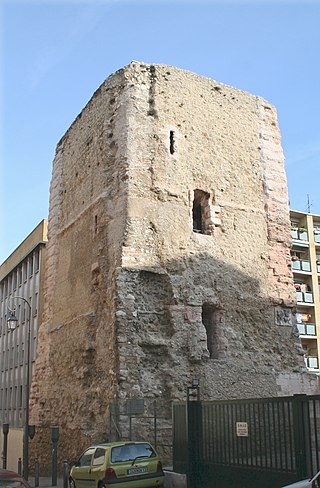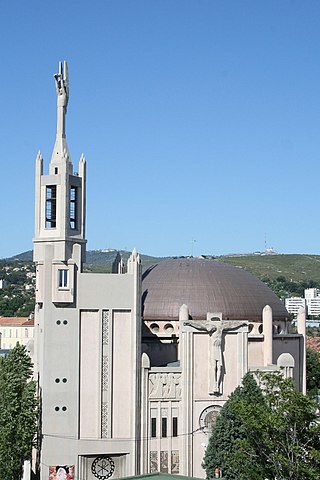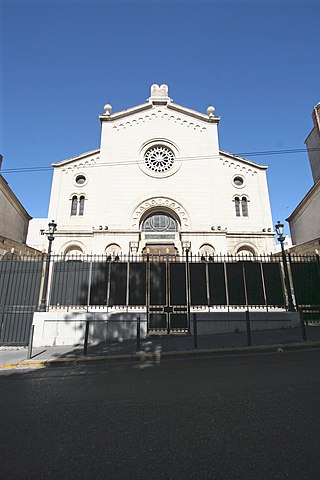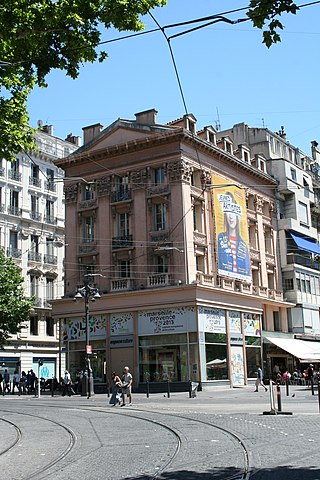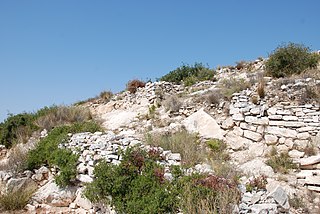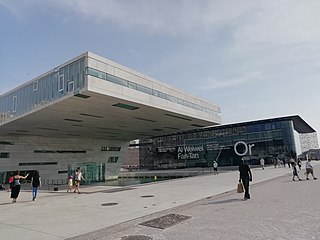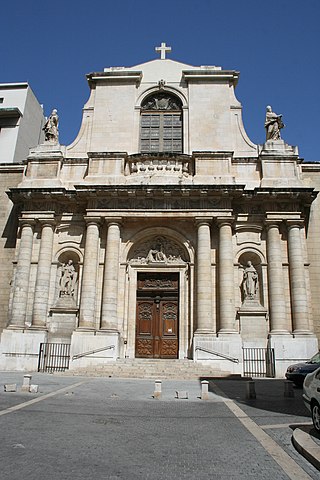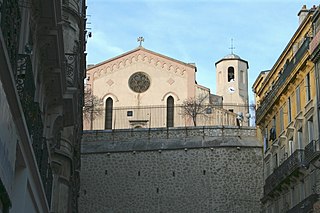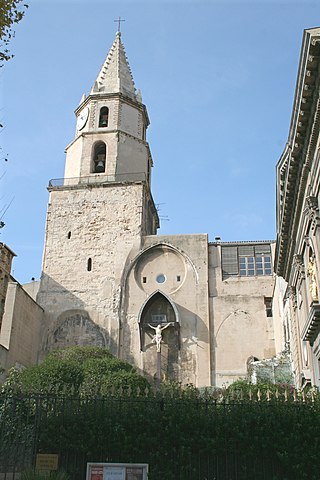56 Sights in Marseille, France (with Map and Images)
Legend
Premium Sights
Book tickets, guided tours and activities in Marseille.
Guided Free Walking Tours
Book free guided walking tours in Marseille.
Welcome to your journey through the most beautiful sights in Marseille, France! Whether you want to discover the city's historical treasures or experience its modern highlights, you'll find everything your heart desires here. Be inspired by our selection and plan your unforgettable adventure in Marseille. Dive into the diversity of this fascinating city and discover everything it has to offer.
Sightseeing Tours in MarseilleActivities in MarseilleThe Opéra de Marseille, known today as the Opéra Municipal, is an opera company located in Marseille, France. In 1685, the city was the second in France after Bordeaux to have an opera house, which was erected on a tennis court.
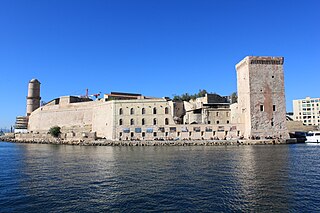
Fort Saint-Jean is a fortification in Marseille, built in 1660 by Louis XIV at the entrance to the Old Port. Since 2013, it has been linked by two foot-bridges to the historical district Le Panier and to the Museum of European and Mediterranean Civilisations; the latter being the first French national museum to be located outside Paris.
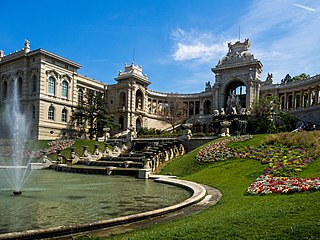
The Palais Longchamp is a monument in the 4th arrondissement of Marseille, France. It houses both the Musée des beaux-arts and the Muséum d'histoire naturelle de Marseille. The surrounding Longchamp Park is listed by the French Ministry of Culture as one of the Notable Gardens of France.
The Hôtel Daviel is a building in Marseille built between 1743 and 1747 by the Gérard brothers. It is named after the surgeon and ophthalmologist Jacques Daviel, who went to Marseille during the plague of 1720.
The Palais de la Bourse is a building on the Canebière in Marseille, France. It houses the Chambre de commerce et d'industrie Marseille-Provence, as well as the Musée de la Marine et de l'Économie de Marseille.
Gare de L'Estaque is a French railway station on the Paris-Lyon to Marseille-Saint-Charles line, located in the 16th arrondissement at the northwestern end of the city of Marseille, in the Bouches-du-Rhône department, in the Provence-Alpes-Côte d'Azur region. It owes its name to the district of Marseille that it serves, made famous by Paul Cézanne and his painter friends from the 1880s to the 1910s. The station of L'Estaque being located quite high on the hill, it gave its name to this part of the village: L'Estaque-Gare, the lower part being named L'Estaque-Plage.
7. Palais du Pharo
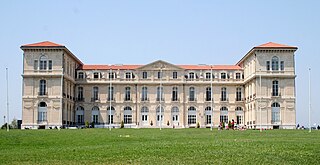
The Palais du Pharo is a palace in Marseille, Southern France, overlooking the Mediterranean Sea, west of the Old Port (Vieux-Port). It was built in Second Empire style by Emperor Napoleon III for Empress Eugénie, starting in 1858. However, at the fall of the Second Empire in 1870, the building had just been finished. Nowadays, the palace and its gardens are used for events, with the park open to the public.
8. Mémorial de La Marseillaise
"La Marseillaise" is the national anthem of France. The song was written in 1792 by Claude Joseph Rouget de Lisle in Strasbourg after the declaration of war by France against Austria, and was originally titled "Chant de guerre pour l'Armée du Rhin".
9. Unité d'Habitation - Cité Radieuse
The Unité d'habitation de Marseille — also known as the Cité Radieuse de Marseille, Cité Radieuse, Le Corbusier or more colloquially La Maison du fada — is a residence built between 1947 and 1952 by the architect Charles-Édouard Jeanneret-Gris, better known under the pseudonym Le Corbusier (1887-1965).
10. Pierre Puget
Pierre Paul Puget was a French Baroque painter, sculptor, architect and engineer. His sculpture expressed emotion, pathos and drama, setting it apart from the more classical and academic sculpture of the Style Louis XIV.
11. Grotte Cosquer
Cosquer Cave is located in the Calanque de Morgiou in Marseille, France, near Cap Morgiou. The entrance to the cave is located 37 m (121 ft) underwater, due to the Holocene sea level rise. The cave contains various prehistoric rock art engravings. Its submarine entrance was discovered in 1985 by Henri Cosquer, a professional diver. The underwater passage leading to the cave was progressively explored until 1990 by cave divers without the divers being aware of the archaeological character of the cave.
12. Carrière antique de la Corderie
The ancient quarry of the Corderie is an archaeological site located in the 7th arrondissement of Marseille, in the Saint-Victor district, boulevard de la Corderie. Discovered during preventive archaeology work in 2016-2017, this quarry was used to extract the building materials necessary for the establishment of the Greek colony of Massalia. It was used from the sixth century BC. in Roman times as part of the production of monumental blocks for construction as well as sarcophagi.
13. Château de la Buzine
The Château de La Buzine is a nineteenth-century building located in the 11th arrondissement of Marseille. It owes its fame to Marcel Pagnol, who evoked it in his Souvenirs d'enfance and was its owner.
14. Colonne du Dévouement ou colonne de la Peste
The Great Plague of Marseille, also known as the Plague of Provence, was the last major outbreak of bubonic plague in Western Europe. Arriving in Marseille, France, in 1720, the disease killed over 100,000 people: 50,000 in the city during the next two years and another 50,000 to the north in surrounding provinces and towns.
15. Museum of Mediterranean Archaeology
The Museum of Mediterranean Archaeology, which is located on the first floor of the Vieille Charité in Marseille, brings together two departments: Egyptian antiquities and classical antiquities. The regional archaeology, which occupied another room, has been transferred to the Museum of History of Marseille at the Centre Bourse. On the second floor of La vieille Charité is the Museum of African, Oceanic and Amerindian Arts.
Wikipedia: Musée d'archéologie méditerranéenne (FR), Website
16. Vieux-Port
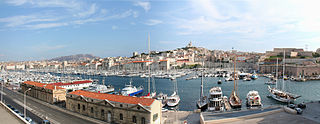
The Old Port of Marseille is at the end of the Canebière, the major street of Marseille. It has been the natural harbour of the city since antiquity and is now the main popular place in Marseille. It became mainly pedestrian in 2013.
17. Grotte Cosquer
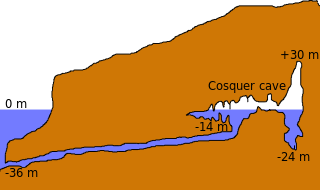
Cosquer Méditerranée is an interpretation centre located at the Villa Méditerranée, in Marseille, in the Bouches-du-Rhône. Opened to the public on June 4, 2022, it houses a partial replica of the Cosquer cave and its most significant cave works.
18. Baume Loubière
Located in the 13th arrondissement of Marseille, 2 km north-west of the commune of Château-Gombert, the Loubière balm was discovered in 1829 by J. Simonet. It is also called the Loubière cave or the Loubière caves, Loubière can be written with or without "s". The Chaîne de l'Étoile where the cave is located is rich in prehistoric sites.
19. Basilique du Sacré-Cœur
The Basilica of the Sacred Heart of Marseille is one of the minor basilicas of the Roman Catholic Church, dedicated to the Sacred Heart of Jesus Christ. It is located in Marseille on Avenue du Prado, in the Rouet district, in the 8th arrondissement. Built in the first half of the twentieth century in a Romano-Byzantine style, it was consecrated on May 5, 1947 by Cardinal Roques, Archbishop of Rennes, then erected as a minor basilica on September 17, 1997 by Pope John Paul II. The building was built to commemorate the plague of 1720 and serve as a memorial to the First World War.
20. Sainte-Marie-Madeleine-des-Chartreux
The church of Sainte-Marie-Madeleine des Chartreux is located on Place Edmond-Audran in the 4th arrondissement of Marseille. Before being a parish church, this church was the chapel of a monastery of the Carthusian order which gave its name to the district.
21. Église Saint-Laurent
The Church of Saint-Laurent is a Provençal Romanesque style church located at 16 esplanade de la Tourette, in the 2nd arrondissement of Marseille, near Fort Saint-Jean, on a hill to which it gave its name. It is the parish of the fishermen of Marseille.
22. Marégraphe
The Marseille tide gauge is a tide gauge set up in 1883 at number 174 of the Corniche in Marseille, in Anse Calvo. The aim is to determine an origin of the altitudes for continental France. The measurements were carried out continuously from 1 January 1884 to 31 December 1896, over 13 years. On January 1, 1897, the arithmetic average of all the measurements made during these thirteen years determined the mean level of the sea at this place. This mean level has been adopted as the French reference zero altitude.
23. Ancien hôtel Roux de Corse
The Hotel Roux de Corse is a building located at 13 rue Montgrand in the 6th arrondissement of Marseille, France. This building, built around 1745, is the former private mansion of the Marseille shipowner Roux de Corse. Sold to the city of Marseille in 1805, it first served as the residence of the prefect of the Bouches-du-Rhône, then in 1891 housed a high school for young girls. The building is now part of the Lycée Montgrand.
24. Escalier de la gare Saint-Charles
The monumental staircase of the Marseille-Saint-Charles station, which gives direct access to the Boulevard d'Athènes, was inaugurated by the President of the Republic Gaston Doumergue on 24 April 1927.
Wikipedia: Escalier monumental de la gare de Marseille-Saint-Charles (FR)
25. Hôtel de Cabre
The house of the Alderman of Cabre, also called the Hôtel de Cabre, is the oldest house in Marseille. It is located at the corner of rue de la Bonneterie and Grand-Rue, in the 2nd arrondissement. It should not be confused with the Hôtel de Cabre in Aix-en-Provence.
26. Marseille History Museum
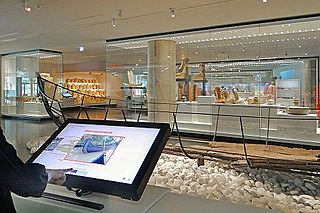
The Marseille History Museum is the local historical and archaeological museum of Marseille in France. When opened in 1983, it became one of the most significant museums for urban history in France, dedicated to exhibiting the major archaeological finds discovered after the site was excavated in 1967; at the same time the property was redeveloped commercially and the Centre Bourse shopping arcade constructed. The museum building is entered from within the centre, and opens out onto the "Jardin des Vestiges", an outdoor garden containing the stabilised archaeological remains; it includes classical ramparts, port buildings, and a necropolis.
27. Caves Saint-Sauveur
The Caves Saint-Sauveur is an underground building located in the 2nd arrondissement of Marseille, France. The cellars are located under the Place de Lenche, on the site of the former abbey of the nuns of Saint-Sauveur. The whole was classified as a historical monument in 1840.
28. Église Saint-Nicolas-de-Myre
The church of Saint-Nicolas de Myre is the oldest oriental church in Marseille and France, it is, since its inauguration in 1822, the witness of the oriental immigration to Marseille and has two originalities, its architecture with its layout and its oriental décor. It is the first church of the Melkite Greek Catholic Church. The Divine Liturgy, of the Byzantine rite, is celebrated in Arabic and French.
29. Monument aux morts de l'Armée d'Orient et des terres lointaines
The Monument to the Dead of the Army of the Orient and Distant Lands, or Porte d'Orient, is a war memorial located on the Corniche Kennedy in Marseille, dedicated to the dead of the Army of the Orient and the Distant Lands of the First World War,
Wikipedia: Monument aux morts de l'Armée d'Orient et des terres lointaines (FR)
30. Oppidum des Baou de Saint-Marcel
The oppidum of the Baou de Saint-Marcel is a fortified Celto-Ligurian Segobrige settlement site, founded in the first quarter of the sixth century BC. and abandoned in the last quarter of the second century BC. It is located in the Saint-Marcel district, in the 11th arrondissement of Marseille.
31. Muséum d'Histoire Naturelle
The Muséum d’histoire naturel de Marseille, also known in English as the Natural History Museum of Marseille, is one of the most visited natural history museums in France. It was founded in 1819 by Jean-Baptiste, marquis de Montgrand and Christophe de Villeneuve-Bargemon, prefect of the Bouches-du-Rhône department. It is located in the Palais Longchamp, 4th arrondissement of Marseille, built according to the plans of Henri-Jacques Espérandieu.
Wikipedia: Muséum d'histoire naturelle de Marseille (EN), Website
32. Campagne Pastré
La Campagne Pastré is a 112-hectare public park, located in the 8th arrondissement of Marseille, close to the road that leads from La Pointe Rouge to Les Goudes. It is a green space that alternates areas where Mediterranean vegetation grows freely and in an almost wild way, and more structured, landscaped and equipped areas. Various activities are offered to walkers: a fitness trail, acro-branches, an equestrian centre or merry-go-rounds for young children. In the heart of this park are three bastides built in the nineteenth century: the Château Pastré, which housed the former Earthenware Museum, the Château Estrangin and the Château Sanderval.
33. Phare du Planier
Planier Light is an active lighthouse on the small Île de Planier, 13 kilometres (8.1 mi) from Marseille, Bouches-du-Rhône, France. At a height of 216 feet (66 m) it is the twelfth-tallest "traditional lighthouse" in the world.
34. Bastide de Tour Sainte
The Bastide de Tour Sainte is the eastern part of the former Domaine de Tour Sainte created in the 1850s by Amédée Armand, an industrialist from Marseille. It borders the Chemin des Bessons, on the even-numbered side, in the Sainte-Marthe district.
35. Musée des Beaux-Arts
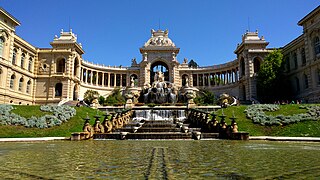
The Musée des beaux-arts de Marseille is one of the main museums in the city of Marseille, in the Provence-Alpes-Côte d'Azur region. It occupies a wing of the Palais Longchamp, and displays a collection of paintings, sculptures and drawings from the 16th to 19th centuries.
Wikipedia: Musée des beaux-arts de Marseille (EN), Website, Flickr
36. Monument commémoratif au roi Alexandre Ier de Yougoslavie et à Louis Barthou
The Memorial to King Alexander I of Yugoslavia and Louis Barthou is a monument located in the 6th arrondissement of Marseille, France, commemorating the assassination of King Alexander I and Louis Barthou. It is the work of the architect Gaston Castel and the sculptors Antoine Sartorio, Louis Botinelly and Élie-Jean Vézien.
Wikipedia: Monument commémoratif au roi Alexandre Ier de Yougoslavie et à Louis Barthou (FR)
37. Îlot urbain grec du collège du Vieux-Port
The Greek urban block of the Collège du Vieux-Port is a historical monument in Marseille. It preserves remains dating back to the foundation of the Phocaean city, Greek Marseille, in the sixth century BC.
38. Alose submarine
French submarine Alose (Q33) (“Shad”) is a Naïade-class submarine of the Romazotti type. She was built for the French Navy at the beginning of the 20th century. Alose remained in service until just prior to the outbreak of World War I.
39. Cathédrale des Saints-Traducteurs de Marseille
The Cathedral of the Holy Translators of Marseille, also known as the Church of Saint-Sahak and Saint-Mesrob in reference to Sahak the Parthian and Mesrop Mashtots, is a religious building of the Armenian Apostolic Church located in the 8th arrondissement of Marseille.
Wikipedia: Cathédrale des Saints-Traducteurs de Marseille (FR)
40. Musée Regards de Provence
The Regards de Provence Museum is a museum created in Marseille in 2013 by the Regards de Provence Foundation in the former sanitary station of the port of Marseille. Its collection, built up by private patrons, consists of 850 works of art from the modern era to the present day, brought together to promote the artistic and cultural heritage of Marseille, Provence and the Mediterranean.
41. Maison Gaston Castel
The Gaston Castel House is a personal house built by the architect Gaston Castel in 1924. Located in the Cinq-Avenues district, in the 4th arrondissement of Marseille, France, it was sold at auction in 1989.
42. Grotte-ermitage des Aygalades
The Aygalades hermitage cave or Carmelite hermitage cave is one of the first settlements of the Carmelite congregation in France. It is located in the northern districts of Marseille, overlooking the A7 motorway towards La Viste. It has been classified as a historical monument since 31 August 1992 and has been listed since 2 September 1994.
43. Arsenal des galères
The Arsenal des Galères is a former military arsenal located in Marseille, France. It was built by Colbert in the second half of the 17th century to house and arm King Louis XIV's galleys, but was only fully operational for less than a hundred years, galleys rapidly losing their role in naval warfare to ships.
44. Hôtel Louvre et Paix (ancien) ou Hôtel dit de La Marine
The Hôtel Louvre et Paix is a historic building in Marseille, France. Dedicated in 1863 as a luxury hotel, it was used by the Kriegsmarine during World War II. It now houses city administration offices and a C&A store.
45. Tour des Trinitaires
The Tour des Trinitaires is a tower - a former bell tower of a convent dating from the early thirteenth century - located on rue de la Vieille-Tour, in the 2nd arrondissement of Marseille, France. The city of Marseille owns the building.
46. Église Saint-Louis
The Church of St Louis is a historic Roman Catholic church in the 15th arrondissement of Marseille, France. It was designed in the Bauhaus architectural style by Jean-Louis Sourdeau, with additional sculptures designed by Carlo Sarrabezolles. Its construction was completed in 1935. It has been listed as an official historical monument since December 14, 1989.
47. Grande Synagogue
The Great Synagogue of Marseille is a Jewish congregation and synagogue, located on Rue Breteuil in the 6th arrondissement of Marseille, France. The building was listed as a monument historique in 2007. The congregation worships in the Sephardi rite.
48. Maison du Figaro
The Maison du Figaro is a historic building in the 1st arrondissement of Marseille in France. It was designed by architect Pierre Pavillon, and it was completed in 1675. It has been listed as an official historical monument since 1992.
49. Oppidum de Verduron
The Oppidum de Verduron is an oppidum in the 15th arrondissement of Marseille, Southern France. It was built in the Iron Age. It was discovered in 1906, but not fully excavated until 1911. It has been listed as a historical monument since 24 August 2004.
50. Museum of Civilizations of Europe and the Mediterranean
The Museum of European and Mediterranean Civilisations (Mucem) is a national museum located in Marseille, inaugurated by President François Hollande on 7 June 2013, when Marseille was European Capital of Culture. The construction of the building is the work of the French architect Rudy Ricciotti.
51. Museum of African, Native American and Oceanian Arts
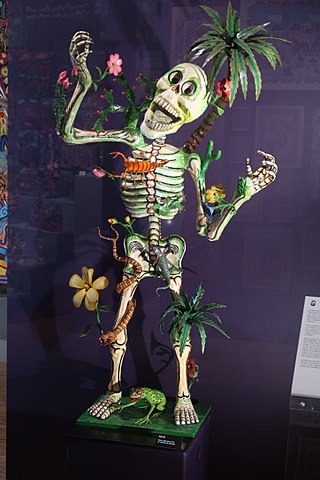
The Museum of African, Oceanian and Amerindian arts, located on the second floor of the Old Charity in the 2nd arrondissement of Marseille, presents works exclusively devoted to works by African, Oceanian and Amerindian continents. On the first floor of the building is the Museum of Mediterranean Archeology. The Museum of African, Oceanian and Amerindian arts reconciles the observation of exposed objects with scientific information on men and societies. There are, in particular, masks from large collections, made up during the 20th century, and which participated in the first exhibitions of these extra-European arts, during the years 1930-1935, associated with the renewal of looks and First ethnographic, ethnological and anthropological studies on these cultures, parallel to modern art. With the Mexican popular arts, the bright colors and the fantastic are everywhere, a fantastic art that inspired many artists and poets in the 20th century and even today.
Wikipedia: Musée des arts africains, océaniens et amérindiens (FR), Website
52. Église Saint-Cannat-les-Prêcheurs
The church of Saint-Cannat, located on the Place des Prêcheurs in Marseille, near the bottom of the rue de la République, was founded by the Friars Preachers, the order of Saint Dominic. It is dedicated to Saint Cannat, bishop of Marseille around 486, after whom a locality in the department is named. Feast day on October 15.
53. Église Saint-Pie X
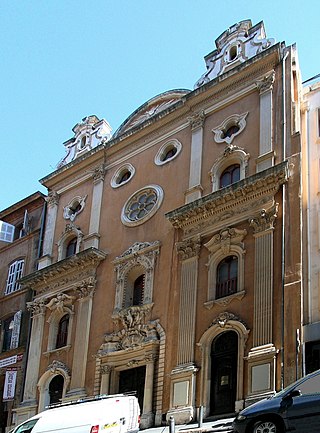
The Church of the Mission of France is a church built at the end of the seventeenth century and renovated in the nineteenth century. It is located at 44 rue du Tapis-Vert, in the 1st arrondissement of Marseille, France.
54. Église Notre-Dame-du-Mont-Carmel
The church of the Grands-Carmes is located in the 2nd arrondissement of Marseille on the square of the same name which is located between the Jules-Guesde and Sadi-Carnot squares, on a hill to which it gave its name. It was classified as a Historic Monument by decree of 20 January 1983 for its interior and listed as a historic monument for its facades and roofs on the same date.
55. Notre-Dame-des-Accoules
The Notre-Dame-des-Accoules church is a former medieval collegiate church located in the Accoules district of Marseille, razed during the Revolution with the exception of the bell tower, which is now classified as a historical monument. In 1820, a crypt and a Calvary were built in front of the back wall of the destroyed church. From 1824, a new church was built to the right of the Calvary.
56. Le Silo

CEPAC Silo is a Marseille performance hall inaugurated in 2011 and located in Euroméditerranée, a district of the 2nd arrondissement. It was, previously, a former industrial building in the city of Marseille.
Share
How likely are you to recommend us?
Disclaimer Please be aware of your surroundings and do not enter private property. We are not liable for any damages that occur during the tours.
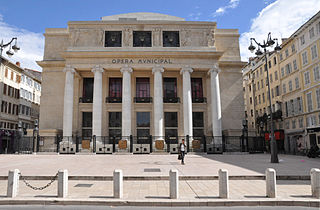
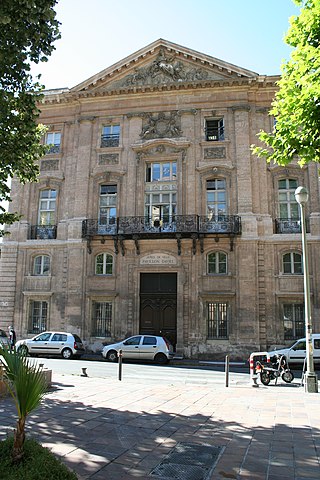
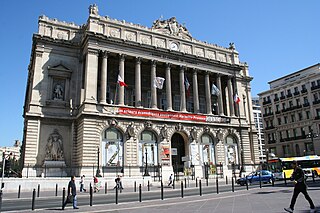
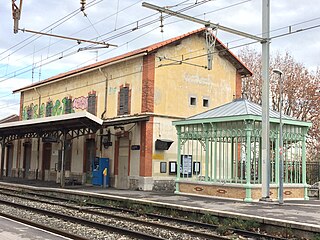
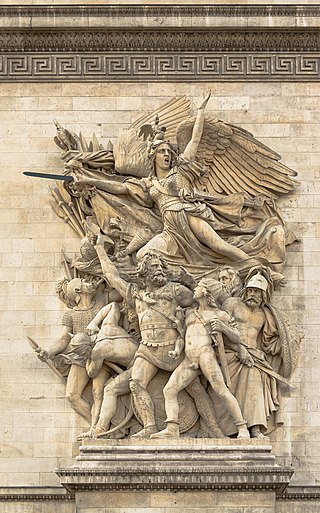

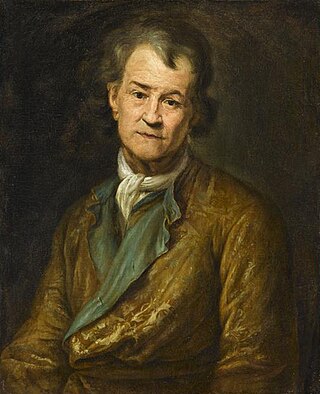

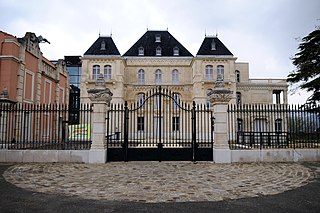
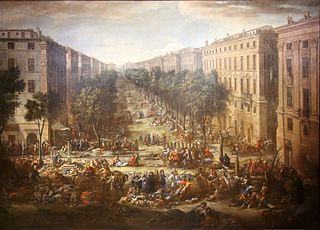
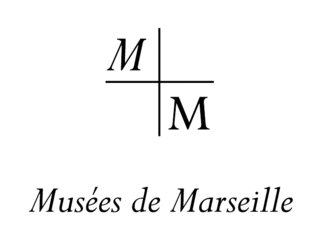
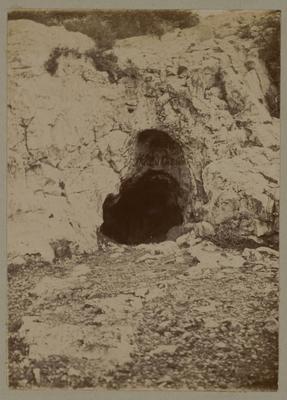
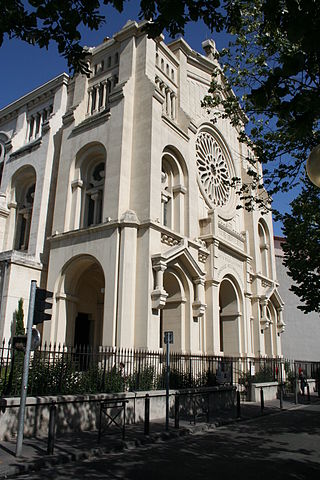
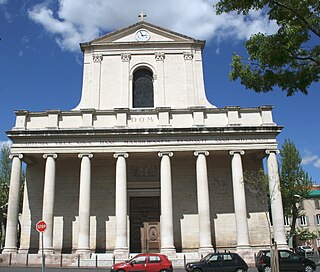
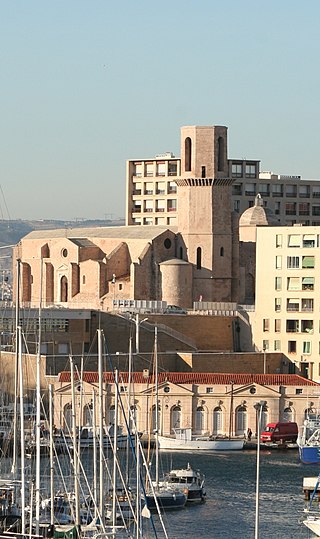
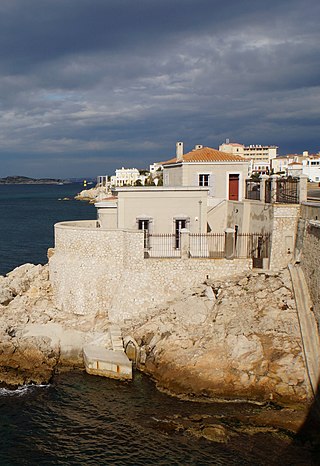
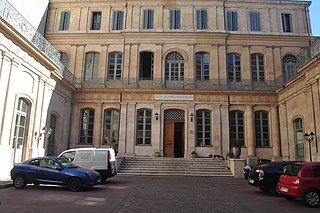
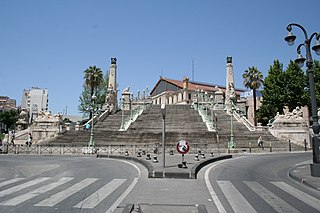
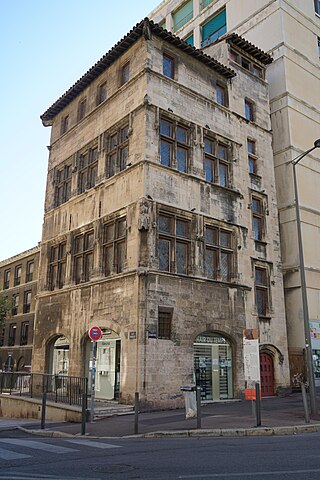
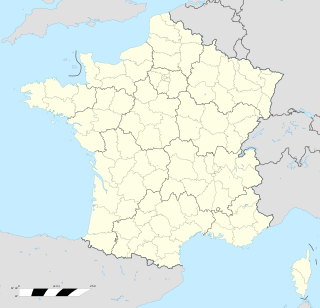
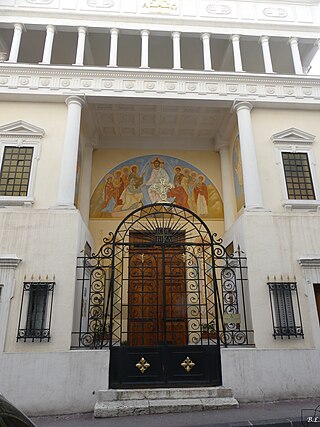
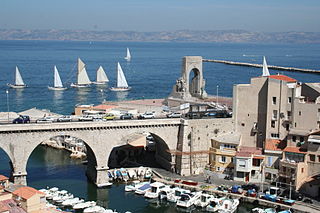
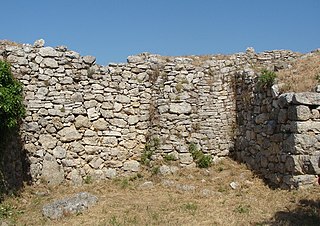
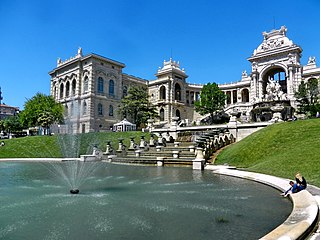
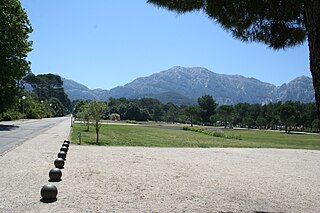
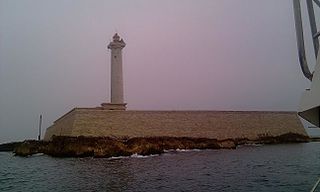
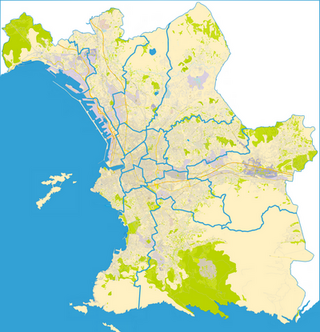
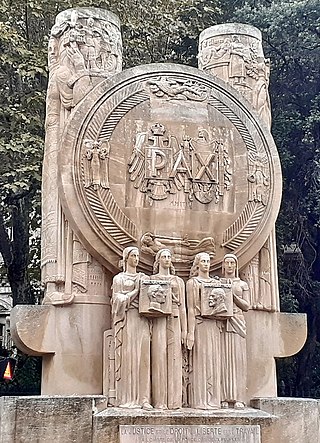
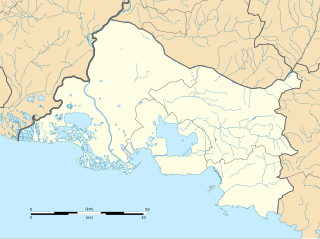
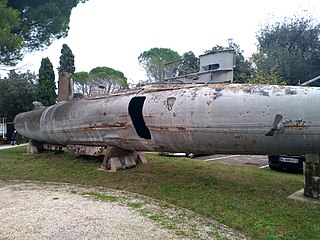
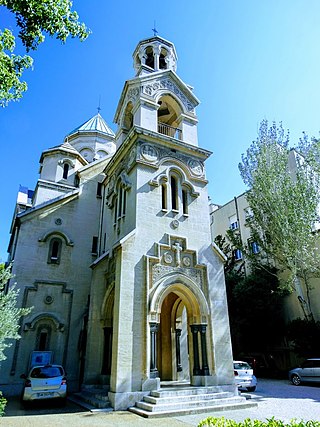
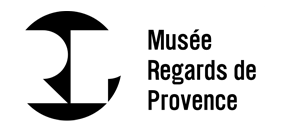
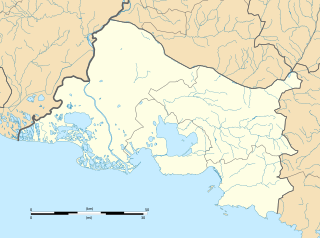
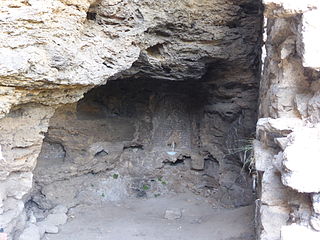
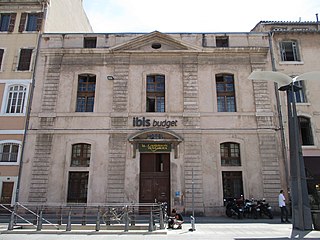
-ou-Hôtel-dit-de-La-Marine.jpg)
